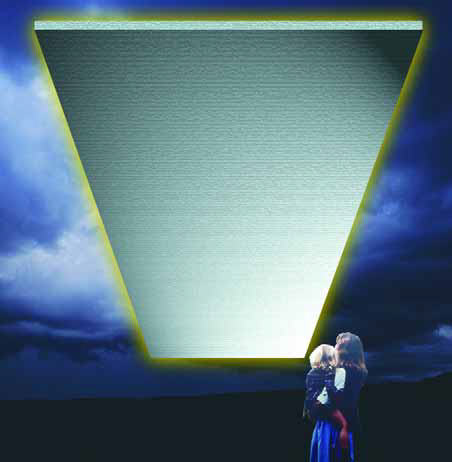ARTICLES
Advance Search
Aquatic Health
Aquatic Health, Fitness & Safety
Around the Internet
Aquatic Culture
Aquatic Technology
Artful Endeavors
Celebrity Corner
Life Aquatic
Must-See Watershapes
People with Cameras
Watershapes in the Headlines
Art/Architectural History
Book & Media Reviews
Commentaries, Interviews & Profiles
Concrete Science
Environment
Fountains
Geotechnical
Join the Dialogue
Landscape, Plants, Hardscape & Decks
Lighter Side
Ripples
Test Your Knowledge
The Aquatic Quiz
Other Waterfeatures (from birdbaths to lakes)
Outdoor Living, Fire Features, Amenities & Lighting
Plants
Ponds, Streams & Waterfalls
Pools & Spas
Professional Watershaping
Structures (Editor's Notes)
Travelogues & History
Water Chemistry
WaterShapes TV
WaterShapes World Blog
Web Links
Around the Internet
Aquatic Culture
Aquatic Technology
Artful Endeavors
Celebrity Corner
Life Aquatic
Must-See Watershapes
People with Cameras
Watershapes in the Headlines
When you work on projects in which stone is commonly measured in the thousands of tons and streams are frequently described in fractions of miles, you're not easily impressed by size. This job, however, was remarkably vast - a project driven by creative passion and a client's desire to turn a singular vision into reality. It's the kind of opportunity that doesn't come along every day, and when it did, we knew we'd have to give it everything we had. Our company, Glacier Inc. of Glenshaw, Pa., is a design and construction firm specializing in large natural and naturalistic bodies of water, and most of our work includes
I'm always looking for projects where I'm brought in to design the entire exterior environment, complete with hardscape, planting plans and watershapes. Working this way gives me a straight shot at integrating all of these major elements into cohesive designs that fit the setting. But I believe in collaboration, too, and in giving interested clients an opportunity to participate in the process. I listen carefully to what they say, factor in their budgets and then start working toward a suitable design. This integrated approach often requires intensive and extensive interaction with homeowners. Through it all, I'm flexible - but I'm also confident in my abilities, experience and expertise and generally end up installing something that closely matches my sense of the way things should be. When it works, everything goes smoothly. In the case of the project pictured in these pages, however, the process has been much more involved and is, 18 months into it, still ongoing in
For watershapers looking to grow into broad, integrated exterior designs that extend beyond the water's edge, The Garden Design Book (compiled by Cheryl Merser and the editors of Garden Design magazine) is a great place to start. Published by Harper-Collins in 1997, the book draws on years of articles published in the magazine, a wonderful publication for both amateur and professional gardeners. Throughout the 300+ beautifully illustrated pages, Merser and company offer a huge stock of valuable information for those in quest of complete environments. Merser is not a designer, and one of the things I like most about the book is that she
If you're a watershaper of any kind, odds are that you build concrete slabs. You build them to create decks, set up equipment pads, establish sub-bases for finish materials - and for a variety of other essential construction purposes. No matter the application, it's important to build these slabs to last, which invariably means building them correctly. This isn't something that's important just for mega-buck projects: No matter whether you're working on $20,000 cookie-cutter pools or on custom projects at the very highest level, knowing how to
When you think of palms, it's easy to conjure visions of Hawaii or some other tropical paradise. These graceful plants evoke a sense of serenity and thoughts of calm tropical breezes - and maybe even memories of a cool mai tai in your hand. Unfortunately for lots of us, palms thrive only in warmer climates. In the United States, for example, they generally do not grow north of the 33rd parallel, which stretches roughly from Northern California on the West Coast to South Carolina on the East Coast. This geographic factor is the main reason I haven't discussed palms before in this column. After three years, however, I figure I'm
At nearly five months and counting, it's clear that many of us are still trying to sort out, understand and learn to live with the events of September 11, 2001 - and I suspect that, on some levels, we will be doing so for months or even years to come. Over and over again, we've been told how our lives are now different. Although it'll still take us a while to find out what "different" really means, we know already that we've lost a certain amount of innocence. We've also lost a certain naiveté about the way things are in the wide world and are now reevaluating many things, from big important issues such as airport security to more modest concerns such as
Visiting Hearst Castle is an experience that sticks with you. Long before I became a watershape designer, I know that my childhood visits to this hilltop in Central California inspired and affected my thinking about art and architecture and the creative use of space long before I had any professional interest in those subjects. Every time I go - which is as often as I can - I'm impressed by a collection of art and architecture so rich and varied that I always find something new. For years, I've been amazed by the castle's two pools and their beautiful details, incredible tile and classic style. More recently, however, I've started paying closer attention to the other ways in which water is used on the property - and my appreciation for what I'm seeing grows every time I stop by. A BIT OF HISTORY William Randolph Hearst inherited the 250,000-acre ranch on which the castle was built from his mother, Phoebe Apperson Hearst, in 1919. The remote property hadn't seen much development to that point, but he soon began transforming it into a monument to American ambition and his passion for
Home to some of the world's greatest outdoor spaces, Kyoto, Japan, is a garden lover's heaven. If you make the trip, however, there is one garden that stands above all others - an aesthetic treasure, a nature-inspired garden masterpiece that is quite possibly the most beautiful place I've ever been. Owned by the Japanese imperial family, Katsura Rikyu (pronounced kah-tsu-rah ree-kyu) is an estate in Western Kyoto near the Katsura River. Rikyu means "detached palace," but that translation is a little misleading to English speakers, because the estate does not
It's a grand watershape built at a time and place when "grand" was in fashion in so many ways. Ever since 1940, when the Raleigh Hotel and its beautiful swimming pool opened to the public for the first time, the establishment has made a statement about the sun-drenched glory of a prime South Florida location as well as the glamour of an era gone by. Designed and built by renowned architect L. Murray Dixon, the hotel and pool are located in South Beach, Miami's famed Art Deco district. The pool's curvaceous shape and modern styling reflected the hotel's architecture and the aspirations of the times. As the '40s wore on, it would become a swimming pool that was perfectly in sync with the world around it. When Miami boomed in the years following World War II, the hotel did, too. Vacationers and snowbirds from the great cities of the Northeast arrived in droves, looking for a new kind of excitement and an entirely different sort of glamour of the kind that featured






















